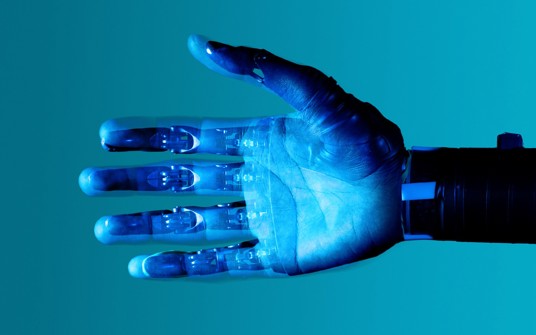How personalisation is shaking up the agency landscape
On retirement in 1967, Leo Burnett requested that the name of the advertising agency he founded be changed if it ever strayed from its creative philosophy. Fifty years on, in June last year, it happened.
Concerned creatives at Leo Burnett Chicago covered the granite sign at the building’s entrance, replacing their founders name with another: MARCEL.
MARCEL is the name of the global AI platform that Leo Burnett’s owners Publicis Groupe famously decided to invest in at the expense of awards shows such as Cannes.
The spark for the name change was a campaign the agency ran for Firestone Tires. It used data from Facebook, Google and other platforms to identify the type of cars their audiences drove, and then showed each audience segment a different personalised advert based on their tastes and characteristics. Over 25 ads were created in total.
Many senior creatives felt that Leo Burnett had bought wholesale into a data-led personalisation approach, losing ‘big idea’ creativity that has been the hallmark of the agency’s success.
In the words of one disgruntled creative director “We’re now all about targeting and retargeting. Who’s thinking about what people are going to be dreaming about?”
The rise of personalisation
Like it or loathe it, personalised advertising has emerged as one of the most important weapons in a marketer’s arsenal. In a 2017 survey of marketers’ priorities, 63% rated it as very or extremely important, with 46% planning to increase their investment in personalisation.
While we’re all very used to seeing personalised emails, one of the fastest growing uses of personalisation has been dynamic display retargeting ads that show people products they’ve recently viewed. Retargeting ads can have click-through-rates up to ten times higher than those of standard non-personalised ads. No wonder they’re now a core part of marketing for almost all ecommerce brands.
The growth of social media has also boosted personalisation, with platforms like Facebook offering advertisers unprecedented access to granular targeting based on age, gender, location, background and interests.
In recent years, new technologies have opened up even more opportunities for personalised advertising. On-demand TV services let advertisers create tailored messages in TV adverts. An early example of this was MediaCom’s 2015 Cannes Lion winning ‘Share a Coke’ campaign, in which 4OD viewers had their name superimposed on a Coca Cola bottle in the brand’s iconic italic font.
Why are advertisers adopting personalisation?
The rise of personalisation can be seen partly as a response to ad fatigue, and partly the saturation of the web with too much poorly targeted advertising. Consumers are increasingly ignoring or avoiding digital advertising – 2017 saw a 30% increase in the use of adblocking software.
Even those who don’t use adblockers have found ways to filter out online ads they have no interest in. A recent study found that only 9% of display ads receive more than a second’s worth of attention.
Faced with falling engagement rates and diminished impact, brands and agencies have looked to personalisation as a solution, in the hope that better targeting and more relevant ads will have more cut through than traditional mass-targeting.
Challenges and controversies
As the use of personalisation has grown, so has the controversy around it. Serious issues have been raised around privacy and intrusion, with 67% of UK consumers expressing concern about how brands use their personal information.
In May 2018, The General Data Protection Regulation (GDPR) came into force, requiring advertisers to obtain explicit permission from individuals in order to be able to use their personal data for marketing purposes. This has put the onus on advertisers to convince consumers of the benefits of personalised experiences and win their consent for their data to be used.
Alongside serious privacy concerns, the growth of personalisation has also fundamentally challenged the creative approach for many agencies. Traditionally, some of the most celebrated campaigns were those that became popular talking points. Budweiser’s “Whassup” campaign from 2000 was a great example of this. The campaign’s catchphrase became a pop culture phenomenon in its own right – joked about on talk shows, parodied online and attributed with helping Budweiser increase beer sales by 2.4 million barrels in a year.
In many ways, this kind of mass audience creative-led campaign is the antithesis of personalised advertising, which aims to deliver individualised messaging tailored to the person viewing it. Agencies embracing personalised advertising have had to challenge ingrained ‘big idea’ thinking championed by advertising pioneers like David Ogilvy. In his 1983 book On Advertising, Ogilvy states ‘it takes a big idea to attract the attention of consumers and get them to buy your product’.
However, changing old habits and embracing new technology may not be a sustainable way forward. One of the chief criticisms levelled at personalisation is its dubious effectiveness in the long term, and its reliance on short-term online metrics as primary performance measures.
In a 2016 IPA report, Les Binet and Peter Field argued that personalisation is a short-term approach with dangerous implications for success over the long-term, stating: “If you are tightly targeted at known consumers then you don’t generate long-term profit growth”.
Binet and Field concluded that effective advertising requires a balance between short-term response activity like personalised targeting and long-term brand building activity – the ‘big idea’ stuff of Ogilvy and Leo Burnett.
The confluence of new technologies and the need for more engaging advertising are only going to become more important. With ever greater resources invested in personalisation year on year, agencies will need to satisfy the privacy and security concerns of customers and regulators, while delivering relevance, effectiveness and lasting cut through for their clients.
---
If you want to know how personalisation can add power to your marketing efforts, please talk to Sam.



